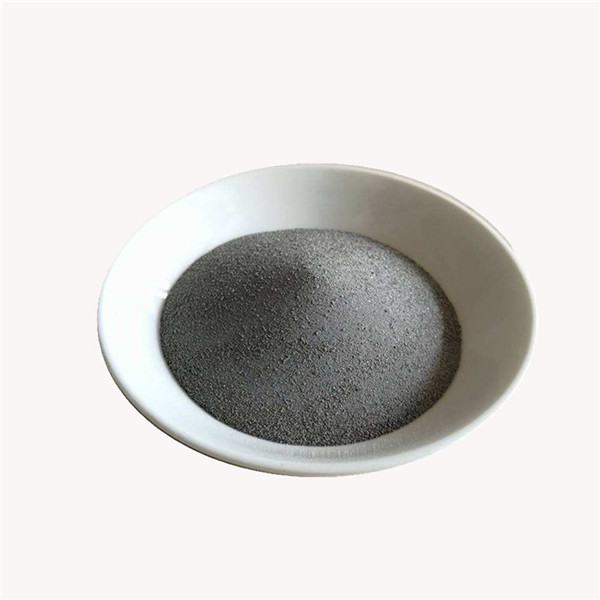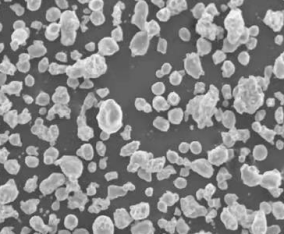Iron alloys powder refers to powder metallurgy forms of iron mixed with alloying elements like nickel, chromium, manganese, and carbon. Iron powder metallurgy allows the manufacture of parts and components with controlled density, porosity, strength, magnetic and other properties by compacting and sintering iron-based powder mixes.
Overview of Iron Alloys Powder
Iron alloy powders provide several advantages over conventional iron and steel forms:
- High dimensional accuracy and repeatability with near net-shape capabilities
- Ability to obtain controlled porosity and densities
- Lower manufacturing costs due to reduced machining
- High material utilization with lower waste generation
- Capability for mass production of complex parts
Iron alloy powder is commonly available in pure iron, low alloy steels, tool steels, stainless steels and soft magnetic alloys as outlined below:
Types of Iron Alloy Powders
| Powder Type | Alloying Elements | Characteristics | Applications |
|---|---|---|---|
| Pure Iron | Carbon < 0.008%, Oxygen | High green strength, low cost | Automotive, machinery |
| Low Alloy Steels | C, Mn, Si, Cr, Mo | Enhanced strength, hardenability | Automotive, oil/gas |
| Tool Steels | C, W, Mo, V, Co | High hardness, wear resistance | Cutting tools, dies |
| Stainless Steels | Cr, Ni, Mo | Corrosion resistance, strength | Valves, marine |
| Soft Magnetic | Ni, Mo, Cu, Nb | High permeability, low loss | Electromagnets, motors |
Characteristics of Iron Alloy Powder
The properties of iron alloy powder can be tailored by selecting appropriate alloying elements and processing conditions:
| Parameter | Characteristics | Control Method |
|---|---|---|
| Composition | Alloying elements, residuals | Powder production method |
| Particle size | Fine, ultrafine, microfine | Gas/water atomization, milling |
| Particle shape | Irregular, spherical, flaky | Gas/water atomization, conditions |
| Purity | Oxygen, nitrogen, carbon levels | Annealing, protective atmospheres |
| Apparent density | Green density, sintered density | Compaction pressure, sintering |
| Porosity | Open, closed pores | Compaction, alloy composition |
| Surface area | Specific surface area | Particle size distribution |
Applications of Iron Alloy Powder
Iron alloy powder finds use in a diverse range of applications across the following sectors:
| Industry | Applications | Example Components |
|---|---|---|
| Automotive | Gears, bearings, filters, engine parts | Connecting rods, camshafts, piston rings |
| Aerospace | Structural parts, aircraft and turbine components | Landing gear, turbine disks, fasteners |
| Machinery | Wear parts, tooling components, drive systems | Bushings, shafts, cams, pulleys |
| Electrical | Soft magnetic cores, rotors, electric motor parts | Transformers, inductors, stators, rotors |
| Consumer | Lock parts, razor blades, magnets | Padlocks, magnetic assemblies |
| Medical | Surgical instruments, implants, devices | Scalpels, orthopedic implants, MRI machines |

Specifications and Design Standards
Iron alloy powder parts must conform to specifications for composition, mechanical properties, dimensions, surface finish and testing methods. Important standards include:
| Standard | Description |
|---|---|
| ISO 4492 | Metallic powders – Flexibility and hardness tests |
| ISO 2738 | Sintered metal materials – Tensile test pieces |
| ISO 3995 | Metallic powders – Determination of green strength |
| ISO 4490 | Measurement of apparent density of metallic powders |
| MPIF Standards | Materials standards, test methods published by the Metal Powder Industries Federation |
| ASTM B783 | Iron-based powder metallurgy (PM) parts specification |
The minimum standards for supplied powder are purity, particle size distribution, apparent density, and flow rate. For finished components, specifications exist for density, mechanical properties, impact energy, hardness, machinability, corrosion resistance and magnetic properties.
Design standards provide guidelines on factors like dimensional tolerances, surface finish, flash allowance, section thickness, fillet radii, rib placement and wall thickness. Rules for powder metal part design are laid out in MPIF Standard 35.
Powder Manufacturing and Processing
The manufacturing process for iron alloy powder has the following key steps:
Powder Production
Iron alloy powder can be produced via:
- Atomization – Melting the alloy and disintegrating the molten stream into fine droplets using gas or water jets. Gas atomized powder has spherical particles ideal for pressing.
- Mechanical Milling – Repeated cold welding, fracturing and rewelding of feedstock in high energy ball mills. Produces fine powder with irregular shape.
- Electrolysis – Electrolytic deposition of iron powders from aqueous solutions.
- Reduction – Chemical reduction of iron oxide powders to iron using hydrogen or carbon monoxide gas.
- Other methods – Carbonyl decomposition, rotary atomization, plasma atomization, condensation of vapor.
| Method | Particle Shape | Particle Size | Purity | Cost |
|---|---|---|---|---|
| Gas Atomization | Spherical | 15 – 150 μm | High | High |
| Water Atomization | Irregular | 150 – 300 μm | Medium | Low |
| Mechanical Milling | Flaky | 1 – 100 μm | Low | Medium |
Powder Blending
The base iron powder is blended with alloying elements, lubricants, and flow agents as per the final alloy composition required. The powder mix is homogenized in a blender for uniform composition.
Compaction
Compaction presses the powder mix into a die cavity under high pressures to produce a green compact with the desired shape. The common compaction methods include:
- Single Action Pressing: Simple, low cost, suitable for low production rates. Pressures up to 600 MPa.
- Double Action Pressing: Powder is compressed from top and bottom punches. Pressures up to 1000 MPa. Better part uniformity.
- Isostatic Pressing: Uniform pressure applied on all surfaces in a fluid. Complex shapes, uniform densities. Requires encapsulation.
- Roll Compaction: Powder is compressed between two rolls to form a sheet. The sheet is granulated for pressing. Improves powder flow.
Sintering
Sintering densifies the compact by heating below the melting point to induce bonding between particles. Sintering activates diffusion processes that eliminate pores and increase strength. Sintering is done in controlled atmospheres to prevent oxidation.
Secondary Operations
Additional operations like coining, repressing, infiltration, machining, surface treatment are used to obtain the final part geometry and properties required by the application.
Installation, Operation and Maintenance
The following guidelines apply for powder presses and sintering furnaces:
- Install equipment on flat, vibration-free foundations according to manufacturer specifications
- Level ram and bolster on pressing equipment to avoid uneven compaction
- Ensure adequate lubrication of presses and punches per operating manual
- Setup proper exhaust ventilation and cooling systems
- Calibrate temperature sensors, controllers and recording devices on furnaces
- Use inert gases like nitrogen or dissociated ammonia to minimize oxidation
- Develop schedules and procedures for preventive maintenance of equipment
- Inspect pressing tools and punches regularly for wear, cracks or damage
- Check furnace insulation and heating elements periodically
- Validate processes routinely to ensure uniform heating and compliance with standards
- Train operators on proper operating procedures, safety precautions and quality checks
- Follow manufacturer guidelines for equipment inspections, lubrication, adjustments, and repairs
- Maintain records for all equipment maintenance activities and part production data
Choosing an Iron Alloy Powder Supplier
The key factors in selecting a supplier of iron alloy powder are:
| Parameter | Description |
|---|---|
| Powder quality | Chemistry, particle shape, size distribution, purity |
| Composition range | Variety of material grades and alloy systems |
| Manufacturing capabilities | Atomization, milling, blending, sieving, drying |
| Testing facilities | For chemical analysis, particle size, green density, sintered properties |
| Quality certifications | ISO 9001, IATF 16949, AS9100, ISO 13485 |
| Technical expertise | Alloy knowledge, part design inputs, application engineering |
| Customer support | Responsiveness to requests, project management |
| Delivery | On-time delivery record, quantity flexibility |
| Location | Proximity to operations for reduced lead times |
| Pricing | Competitiveness, volume discounts, stability |
Suppliers should providecertificates of analysis detailing composition, particle size distribution, apparent density, and sieve analysis. They should have technical teams to collaborate on part design and powder selection. The supplier’s process and quality controls must ensure powder lot-to-lot consistency.

Pros and Cons of Powder Metallurgy
| Advantages | Disadvantages |
|---|---|
| Near net shape, minimal machining | Limited material strength compared to wrought alloys |
| Good dimensional precision | Size limitations based on press capacity |
| Complex geometries feasible | Restrictions on shape complexity, wall thickness |
| Economical for mass production | Secondary operations increase cost for lower volumes |
| Wide range of alloys available | Anisotropic properties due to pressing |
| Minimal waste compared to machining | Controlled atmosphere sintering required |
| Lower energy consumption than metalworking | Capital investment for powder production |
| Porosity control for filters, bearings | Powder handling and blending expertise needed |
FAQ
Q: What are the different grades of iron powder available?
A: The main grades include pure iron, low alloy steels, tool steels, stainless steels and soft magnetic alloys. Each has specific compositions tailored for mechanical, magnetic or other properties.
Q: What particle size distribution is ideal for iron powder pressing?
A: A particle size range of 15-150 μm is preferred, with the majority between 45-75 μm. Finer powder packs better but can have low flow for die filling. Coarser powder has good flow but affects densification.
Q: How to improve powder flow properties for pressing?
A: Adding lubricants like zinc stearate or ethylene bis-stearamide in 0.5-1% improves powder flow rate. Annealing the powder or using spherical atomized powder also enhances flow.
Q: What causes cracks in sintered iron parts?
A: Large particles, wide particle distribution, high alloy content, high heating/cooling rates, and thick sections can cause cracking defects during sintering. Optimization of composition, powder characteristics, part design, and sintering cycle is needed.
Q: What affects dimensional tolerance of powder metal parts?
A: Key factors are die wear, elastic springback after pressing, sintering temperature uniformity, part geometry, secondary operations, and final machining. Process controls and die design are critical.
Q: How to improve wear resistance of iron powder metallurgy components?
A: Increase hardness by alloying with carbon, chromium, molybdenum, vanadium, tungsten, or by impregnation. Lower porosity and higher densification also improve wear resistance.
Q: What is the benefit of copper infiltration in iron parts?
A: Molten copper fills internal porosity by capillary action, improving strength, elastic modulus, impact energy, fatigue life, and electrical conductivity.
Q: Can stainless steel powders be processed like tool steel powders?
A: No, stainless steel requires protective atmospheres during compaction and sintering to avoid oxidation. Processing parameters must be optimized separately.
Q: What causes dimensional change during sintering?
A: The main reasons are shrinkage as pores close up, phase transformations causing volume changes, and non-uniform temperature distribution leading to distortion. Proper furnace setup and sintering cycle selection are needed to minimize dimensional change.

